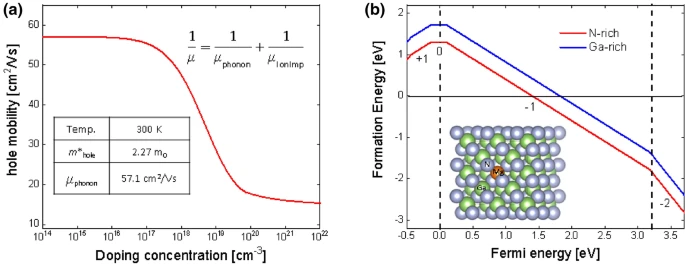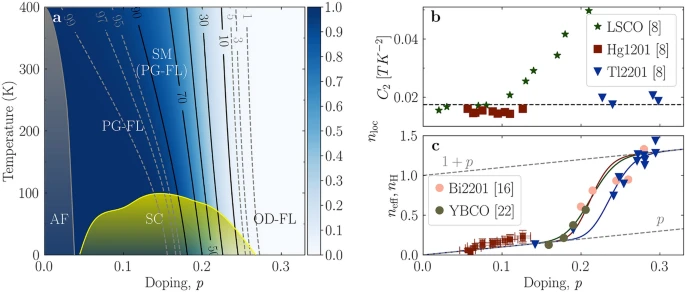Variation of Fermi Energy Level and Carrier Concentration with Temperature 
Procedure
- Gather the required equipment:
- Semiconductor sample (e.g., silicon or germanium)
- Temperature-controlled chamber (e.g., cryostat or furnace)
- Four-point probe setup
- Digital multimeter
- Data acquisition system
- Graphing software
- Protective equipment (gloves, safety glasses)

Fig. 1. The calculated defect formation energy of Mg substitution for Ga as a function of Fermi energy
- Set up the circuit for forward bias:
- Connect the anode of the diode to the positive terminal of the power supply.
- Connect the cathode of the diode to one terminal of the ammeter.
- Connect the other terminal of the ammeter to the negative terminal of the power supply.
- Connect the voltmeter across the diode to measure the voltage drop.
Procedure

Fig. 2. Transport properties and doping evolution of the Fermi surface in cuprates
- Preparation:
- Ensure the semiconductor sample is clean and properly mounted in the four-point probe setup.
- Verify that the temperature-controlled chamber is functioning correctly.
- Initial Measurements:
- Record the initial temperature of the semiconductor sample.
- Measure and record the resistance of the semiconductor sample at this temperature.
- Temperature Variation:
- Gradually increase the temperature of the semiconductor sample in predefined steps (e.g., 10°C intervals).
- Allow the sample to stabilize at each temperature before taking measurements.
- At each temperature, measure the resistance of the sample using the digital multimeter.
- Data Collection:
- Record the temperature and corresponding resistance values in a data table.
- Analysis:
- Plot the resistance versus temperature data to determine the relationship between temperature and carrier concentration.
- Analyze how the Fermi energy level shifts with temperature based on the observed changes in resistance.
- Conclusion:
- Summarize the findings regarding the variation of the Fermi energy level and carrier concentration with temperature.
- Discuss any deviations from theoretical expectations and potential sources of error.
